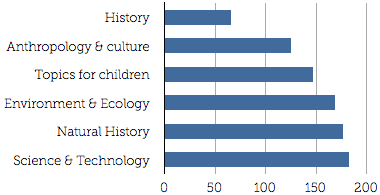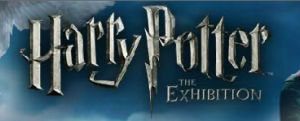There are gender wars, and then there are casualties. It wasn’t until 2011 that the behemoth toymaker LEGO acknowledged girls’ desire to build with bricks, even though the company had long before made a seemingly effortless pivot to co-branding, video games, and major motion pictures. So it’s little wonder that girls face all-too-real obstacles when […]
Read moreCategory: Strategy
 If you put information online, getting traffic is always a challenge. Web traffic may come from “organic” search results, from blogs, from Twitter & Facebook, from bookmark sites, etc. (And if you are a nonprofit, via free AdWords via a Google Grant.) There are many resources online about “search engine optimization.” But don’t confuse the approach for education with that needed for commerce. According to a search engine hacker Mark Stevens, interviewed recently by the New York Times:
If you put information online, getting traffic is always a challenge. Web traffic may come from “organic” search results, from blogs, from Twitter & Facebook, from bookmark sites, etc. (And if you are a nonprofit, via free AdWords via a Google Grant.) There are many resources online about “search engine optimization.” But don’t confuse the approach for education with that needed for commerce. According to a search engine hacker Mark Stevens, interviewed recently by the New York Times:
“I think we need to make a distinction between two different kinds of searches — informational and commercial,” he said. “If you search ‘cancer,’ that’s an informational search and on those, Google is amazing. But in commercial searches, Google’s results are really polluted. My own personal experience says that the guy with the biggest S.E.O. budget always ranks the highest.”
What kinds of traveling exhibits are there? A lot. The Traveling Exhibitions Database (TED) is a database of 768 current traveling exhibitions which are available to U.S. museums. Here’s how they are distributed by category:

 In April 2009, a dozen 53-foot tractor trailers delivered the latest blockbuster exhibit — Harry Potter: The exhibition — to the Museum of Science and Industry in Chicago. The exhibit was big on magic, with 400 costumes and props from the films, including 17 wands, Harry’s famous round glasses, the Marauder’s Map, Harry’s Nimbus 2000 broom, Hermione Granger’s Yule Ball gown, and a lot of oversized furniture. The movie props were big draw. The exhibit was at the start of its tour, and the Chicago museum was the first venue. (more…)
In April 2009, a dozen 53-foot tractor trailers delivered the latest blockbuster exhibit — Harry Potter: The exhibition — to the Museum of Science and Industry in Chicago. The exhibit was big on magic, with 400 costumes and props from the films, including 17 wands, Harry’s famous round glasses, the Marauder’s Map, Harry’s Nimbus 2000 broom, Hermione Granger’s Yule Ball gown, and a lot of oversized furniture. The movie props were big draw. The exhibit was at the start of its tour, and the Chicago museum was the first venue. (more…)
In 2008, IDEA conducted a study about online experiences. The report (download PDF here) outlines key findings from surveys that explored factors that drive online experience as expressed by the three different subject groups – nonprofit organizations and cities, web designers and firms, and the general public. (more…)
Viewing a sequence
June 2nd, 2006 by IDEA
Labeling sequences is paramount. The process of painting a canvas is personal and unique to each artist. Visitors step through the sequence which Philip Pearlstein used to paint a wedding portrait. (WebExhibits) View a the sequence of layers in an Incan mummy. (National Geographic) Problem You need to display a time-lapse sequence, or a
Stepping into emerging markets with informational infrastructure. An “obsolete” computer in the West might be useful and well-received by poorer communities. Problem The digital divide that exists between those with access to technology and those without is exacerbated by the constant improvements – revisions and upgrades – generated by software developers and hardware manufacturers in
Enriching teacher-student communication with online tools. Problem: The limitations of classroom teaching are too constricting. Time and resources don’t stretch far enough, and the quality of your interaction with students is too dependent on the mood of the classroom at the moment you are together. Solution: There are many potential tradeoffs and pitfalls to online
Enhancing the learning experience by correctly using online tools. Problem: Although classroom teaching has its limitations, you are concerned that online teaching sacrifices quality or that it provides refuge for underperformers. Solution: Tap into resources that allow educators to measure their current skills and competencies against those related to successful online teaching in order to
Implementing content management software can overcome the hassles of dissemination. Content management software can take the frustration out of disseminating educational information by streamlining the web publishing process. Problem It’s difficult to find a sensible and sustainable way to distribute up-to-date educational information to users via a web site. Solution Content management software is a
Finding a sensible and sustainable way to provide web site visitors with fresh information is crucial. A mobile Guernsey, such as Minnie, is not a sensible way to distribute fresh milk. To be effective, educational projects need to find a sensible and sustainable method of disseminating fresh information to users. Educational projects have a wealth

